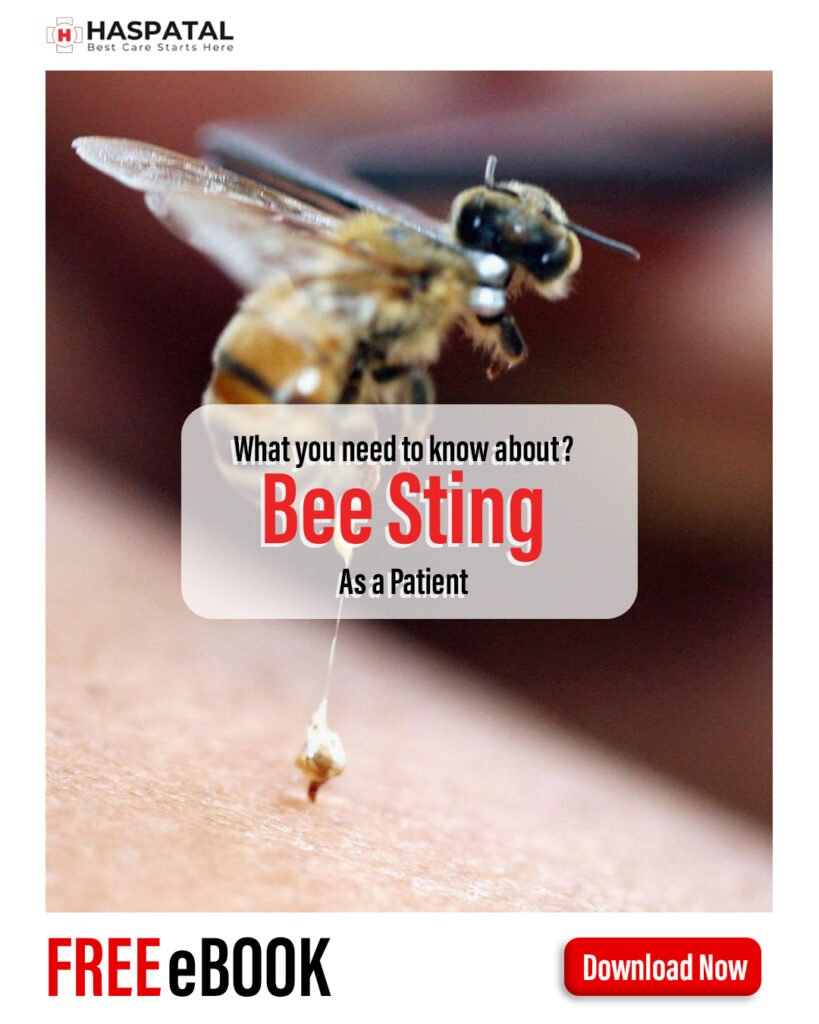How bee sting can affect your health?
Bee Sting
Bee stings are a common nuisance outdoors. In most cases, bee stings are just annoying, and all you need to do for pain relief is take care of your home. However, if you are allergic to bee stings, or if you are stung several times, you may have a more serious reaction that requires urgent treatment.
Symptoms of Bee Sting
Mild allergic reactions can cause one or more of these symptoms at the wound site.
- pain
- Redness
- Acne-like spots
- Mild to moderate swelling
- Heat
- itch
Severe allergic reactions (also called anaphylactic reactions) are less common. But if they do occur, they constitute an emergency.
Symptoms include:
- Breathing problems
- Red hives that appear as an itchy rash and spread to the external area of the bite
- Inflammation of all parts of the face, throat, mouth, and tongue
- Rumors and dysphagia
- Restlessness and anxiety
- High-speed pulse
- Dizziness and sudden drop in blood pressure
- Abdominal pain, nausea, or diarrhea
Get emergency treatment as soon as possible.
Treatment of Bee Sting
There are two types of treatment:
Treatment for Allergic Reaction
Home treatment is sufficient for normal bee stings that do not cause an allergic reaction. On the other hand, multiple puncture wounds or allergic reactions may constitute emergency medical care requiring immediate treatment.
Emergency treatment of allergic reactions
During an anaphylactic attack, if the breathing stops or the heartbeats, the emergency medical team may perform cardiopulmonary resuscitation (CPR). You may be given medicines that include:
- Epinephrine (adrenaline) to reduce allergic reactions in your body
- Oxygen helps to breathe
- Intravenous (IV) antihistamines and cortisone reduce airway inflammation and improve breathing
- Beta-agonists that relieve respiratory symptoms (such as albuterol)
Treatment for Moderate Reaction
The next steps will help relieve inflammation and itching, as they are often associated with major local reactions.
If possible, remove the needle as soon as possible, such as scratching the needle with your fingernail. Do not attempt to remove the puncture wound under the skin. There may be no needle, as the bees leave only the needle. It doesn’t make other insects hurt like bees.
- Clean the affected area with soap and water.
- Apply a cold compress.
- Take over-the-counter painkillers as needed. You can try ibuprofen (Advil, Motrin IB, etc.) to help relieve discomfort.
- If you have a puncture wound in your arm or leg, lift it.
- Apply hydrocortisone cream or calamine lotion to relieve redness, itching, and inflammation.
- If you are concerned about itching or swelling, take oral antihistamines, including diphenhydramine (Benadryl) or chlorpheniramine.
- Do not injure the knife. This increases itching and inflammation and increases the risk of infection.
Bee stings are a common occurrence. They can cause pain, swelling, and, in some cases, allergic reactions. The symptoms usually resolve on their own or with home treatment. However, serious reactions require medical attention. Read more about it on Medical News Today.
Download Haspatal online consultation app and get the best treatment online via video consultation with online doctors and get other services too.

